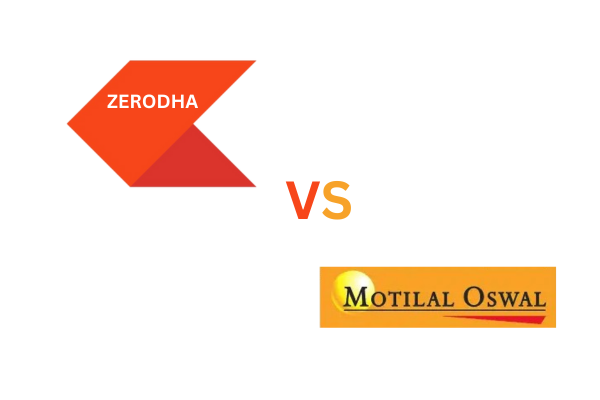Tax harvesting is a smart and legal strategy used by investors to reduce their tax liability on capital gains. By strategically selling and repurchasing investments, individuals can offset gains with losses and lower their overall tax burden. This technique is especially valuable for investors in mutual funds, equities, and other capital market instruments in India.
In this step-by-step guide, we’ll break down the concept of tax harvesting, explain how it works, who should use it, and how it can help you keep more of your hard-earned money.
Table of Contents
What Is Tax Harvesting?
Tax harvesting, also known as tax-loss harvesting, is a method of selling losing investments to realize a capital loss. This loss can then be used to offset capital gains earned from profitable investments, reducing your overall tax liability.
For example, if you’ve made a profit (capital gain) of Rs. 50,000 from one mutual fund and a loss of Rs. 20,000 from another, you can offset your gain with the loss and be taxed only on Rs. 30,000.
Why Is Important?
- Reduces Tax Liability: Offsets capital gains with capital losses to lower tax outgo.
- Maximizes Post-Tax Returns: Helps retain more profits by minimizing taxes.
- Efficient Tax Planning: Encourages smart, timely financial decisions.
- Improves Portfolio Health: Removes underperforming investments systematically.
- Utilizes Exemptions Wisely: Makes full use of the ₹1.25 lakh LTCG exemption.
- Legal Strategy: A compliant way to manage taxes under current laws.
- Useful for Long-Term Investors: Especially helpful for mutual fund investors looking to rebalance portfolios.
How Does Tax Harvesting Work in India?
Here’s how the tax harvesting process works in India:
- Identify capital gains made from your equity mutual funds or stocks (held for over one year).
- Identify stocks or mutual funds with unrealized losses.
- Sell the loss-making investments to realize capital losses.
- Offset these losses against the gains.
- Optionally, repurchase the same investments after a few days to maintain your portfolio structure.
Important Note: According to Indian tax laws, LTCG (long-term capital gains) above Rs. 1.25 lakh in a financial year are taxable at 12.5%.
Tax Harvesting in Mutual Funds
- It involves selling mutual fund units at a loss to offset capital gains and reduce tax liability.
- It helps investors optimize taxes on capital gains, especially under the ₹1.25 lakh exemption limit for equity mutual funds.
- You can reinvest the amount back into the same or similar fund to maintain your portfolio.
- Ideal for investors in equity mutual funds with gains exceeding the tax-free threshold.
- Ensure there’s no wash sale rule violation in India, but timing and fund selection are key.
- Best done at the end of financial year for tax planning.
Types of Capital Gains and Losses in Tax Harvesting
| Type | Holding Period | Tax Rate |
|---|---|---|
| Short-Term Capital Gains (STCG) | Less than 1 year | 20% |
| Long-Term Capital Gains (LTCG) | More than 1 year | 12.5% (above Rs. 1.25 lakh) |
You can offset:
- STCG with STCL (Short-Term Capital Loss)
- LTCG with LTCL (Long-Term Capital Loss)
You cannot offset STCG with LTCL or LTCG with STCL.
When Should You Use Tax Harvesting?
- Use when capital gains exceed ₹1.25 lakh (LTCG exemption limit).
- Ideal at financial year-end for tax planning.
- Apply when portfolio has unrealized losses.
- Use before switching funds to reduce tax burden.
- Helps offset gains from other assets.
Step-by-Step Guide to Tax Harvesting

Step 1: Review your investment portfolio.
Step 2: Calculate unrealized gains and losses on stocks/mutual funds.
Step 3: Identify loss-making assets that can be sold.
Step 4: Sell the loss-making asset to book the capital loss.
Step 5: Offset this capital loss against realized gains.
Step 6: Reinvest the amount in a similar or the same asset.
Example of Tax Harvesting in India
- Capital gains : Rs. 2,00,000
- Capital losses : Rs. 50,000
Taxable Capital Gains = 2,00,000 – 50,000 = 1,50,000 – 1,25,000 (Tax Exemption)
Capital Gains = 25,000 (12.5% – LTCG tax) = ₹3,125
Tax payable will be ₹3,125 (12.5%) for 25,000 after redeeming ₹1.25 lakh.
Pros and Cons
Tools to Use for Tax Harvesting
- Online investment platforms (Zerodha Coin, Groww, Angle One)
- Excel or Google Sheets for gain/loss tracking
- Portfolio tracking apps (INDmoney, TickerTape)
- Financial advisor’s help (optional)
Tax Harvesting vs Tax Saving Investments
| Tax Harvesting | Tax Saving Investments |
| Reduces existing tax via offset | Reduces taxable income via exemptions (e.g. ELSS, PPF) |
| No lock-in period | Usually has lock-in period |
| Based on portfolio decisions | Based on planned tax-saving strategy |
Common Mistakes to Avoid
- Selling all units at a loss blindly
- Not tracking transaction costs
- Reinvesting immediately
- Ignoring portfolio goals while harvesting losses
Who Should Use Tax Harvesting?
- Long-term equity investors
- Mutual fund SIP investors
- High-net-worth individuals (HNIs)
- Tax-conscious investors
Final Tips for Effective Tax Harvesting
- Plan in advance, don’t wait till March
- Track all gains/losses accurately
- Focus on overall portfolio performance
- Don’t let tax strategy override investment strategy
Tax harvesting is a simple yet powerful tool to legally reduce your tax liability and improve your investment returns. When done strategically, it not only minimizes taxes but also strengthens your portfolio for long-term growth. However, always ensure your decisions align with your financial goals and not just for temporary tax benefits.
Frequently Asked Questions (FAQs)
Q1: What is the best way to invest to save taxes?
Invest in ELSS, PPF, NPS, life insurance, and tax-saving FDs to legally save taxes under Section 80C and 80CCD.
Q2: Which SIP is tax free under 80C?
ELSS (Equity Linked Savings Scheme) is the only SIP-based mutual fund eligible for tax deduction under Section 80C of the Income Tax Act.
Q3: How is 12 lakh tax free?
Income up to ₹12 lakh is tax-free due to the new tax regime’s higher exemption limits and rebates, allowing individuals to save taxes without deductions under specific slabs.
Q4: Is PF taxable?
Provident Fund (PF) is tax-exempt if withdrawn after 5 years of continuous service; otherwise, it is taxable as income.
Q5: At what limit is LTCG tax free?
Long-Term Capital Gains (LTCG) up to ₹1.25 lakh per financial year are tax-free on equity investments under current Indian tax laws.
Q6: How much is STCG tax now?
STCG (Short-Term Capital Gains) tax is 20% in India on listed equity shares and equity mutual funds, excluding surcharge and cess.





